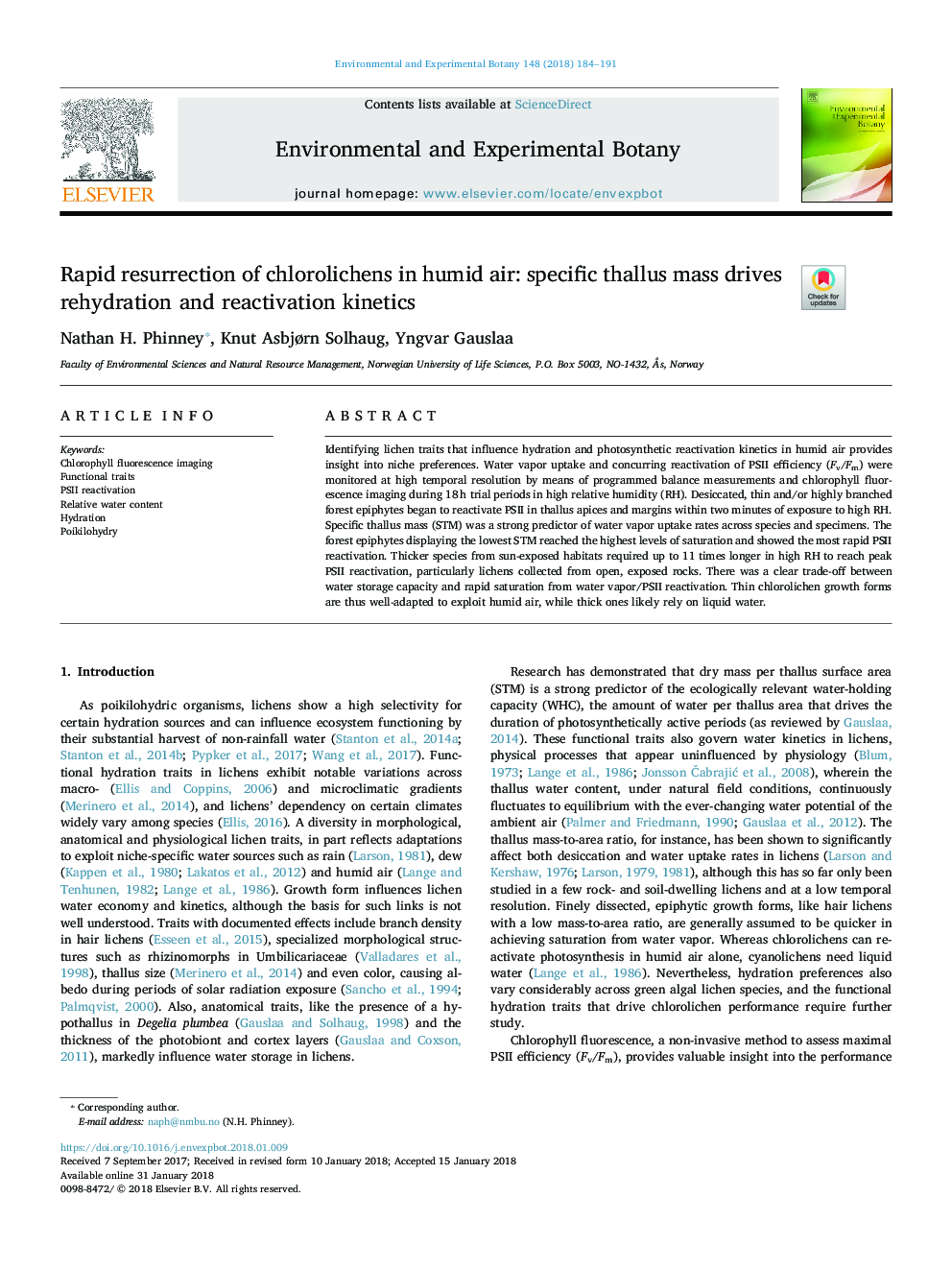| Article ID | Journal | Published Year | Pages | File Type |
|---|---|---|---|---|
| 8887067 | Environmental and Experimental Botany | 2018 | 8 Pages |
Abstract
Identifying lichen traits that influence hydration and photosynthetic reactivation kinetics in humid air provides insight into niche preferences. Water vapor uptake and concurring reactivation of PSII efficiency (Fv/Fm) were monitored at high temporal resolution by means of programmed balance measurements and chlorophyll fluorescence imaging during 18â¯h trial periods in high relative humidity (RH). Desiccated, thin and/or highly branched forest epiphytes began to reactivate PSII in thallus apices and margins within two minutes of exposure to high RH. Specific thallus mass (STM) was a strong predictor of water vapor uptake rates across species and specimens. The forest epiphytes displaying the lowest STM reached the highest levels of saturation and showed the most rapid PSII reactivation. Thicker species from sun-exposed habitats required up to 11 times longer in high RH to reach peak PSII reactivation, particularly lichens collected from open, exposed rocks. There was a clear trade-off between water storage capacity and rapid saturation from water vapor/PSII reactivation. Thin chlorolichen growth forms are thus well-adapted to exploit humid air, while thick ones likely rely on liquid water.
Related Topics
Life Sciences
Agricultural and Biological Sciences
Ecology, Evolution, Behavior and Systematics
Authors
Nathan H. Phinney, Knut Asbjørn Solhaug, Yngvar Gauslaa,
